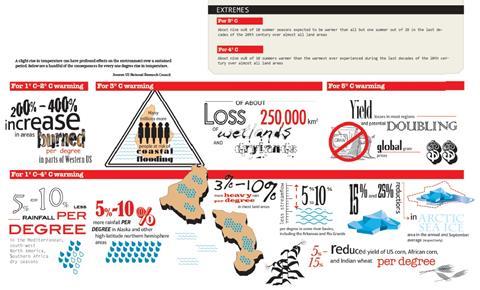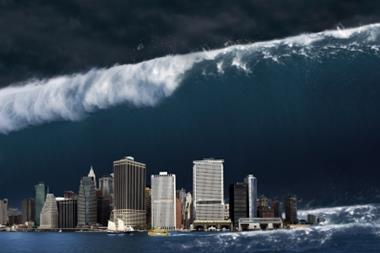Small abnormalities in the weather can prove to be as critical to business operations as extreme natural catastrophes

The effects of extreme weather on business operations has become increasingly more severe with globalisation, but the consequences of slight abnormalities in the weather are perhaps even more important as their impact is often greater.
A one-degree rise or fall in average temperatures has a significant impact on the ecosystem, which has a ripple effect on our environment, behaviour and business.
In recent years, multinationals have learnt how destructive extreme weather can be to their supply chain and business operations, from severe flooding in Northern Europe to wildfires in Australia.
Consequently, natural catastrophes have risen up the risk management agenda and firms in low-risk locations commonly buy risk transfer solutions to protect associated or affiliated
operations in hazardous areas.
However, the frequency of natural catastrophes remains comparatively low when considering small but critical abnormalities to expected weather patterns. These abnormalities range from slightly warmer winters to rainy summers or less wind than usual. These unusual weather changes affect all types of business in every industry, says Swiss Re Corporate Solutions’ head of origination, weather and energy EMEA, Asia-Pacific, Stuart Brown.
“It’s difficult to find a business that is not somehow affected by the weather,” says Brown. “The most directly affected businesses are the utilities because a lot of their businesses, such as air-conditioning, heating and selling gas, are affected by temperature.”
Other industries such as construction, retail and travel are also heavily dependent on the weather, says Brown, but almost every firm can find a cost or opportunity related to weather change.
Anticipating unusual weather is not an easy science, but the expectation of the El Niño phenomenon to occur at the end of the year is something for businesses to consider.
“Countries such as Brazil, Argentina, Australia, Indonesia, the Philippines, India as well as East Asia receive less rainfall during El Niño,” says Walker Institute for Climate System Research postdoctoral scientist Dr Nicholas Klingaman.
“We have already seen an impact on the Indian monsoon, running about 30% below normal in terms of the rainfall, which is extremely deficient. A dry season is considered to be anything less than 10% below normal and this season has already been 30% [below normal].”
The impact of reduced rainfall in India – where the agriculture is largely rain-fed – is significant, according to Klingaman, who says the rain deficiency is likely to continue while the signs of this year being an El Niño year continue. “The models tell us at this point that we have a 75% to 80% chance of this year being an El Niño year, but most of them are predicting a fairly mild El Niño,” he says.
If El Niño occurs this year, California may experience a much-needed rainy spell, Klingaman says – the south-west of the US is one of few land masses to experience higher rainfall during El Niño years. The current drought is now in its third year, which prompted authorities to impose a hosepipe ban, with an unprecedented three-figure fine for anyone caught using water for non-essential purposes.
Although residents of California would welcome a rainy season, retailers, construction firms and other sectors may suffer as a result of the wet conditions.
Financial market solutions are available, although many businesses are unaware of this, says Brown. He explains how Swiss Re insured a chain of pubs in the UK that identified a connection between a reductions in sales and an above-average rainfall.
“It’s disarmingly simple – all we do is write contracts that say if there is too much rain, the pub owner gets paid,” says Brown. “Because weather is so rich in data, you can make those determinations, back-test and check against previous year’s sales to test how the product would have performed and how much it could have saved you,” says Brown.
Brown expects the market to grow in the next few years as more businesses – particularly in construction, utilities and retail – gain a better understanding of their weather-related risks.
“I think this is an under-hedged and undermanaged risk across all kinds of business, even among the utilities that are among the earliest and most traditional users of the product. There are plenty of them that don’t know how to use it,” Brown says.
The data-rich nature of weather risks enables firms to get a handle on their exposures and quantify losses through loss of sales or operational costs. Equally, data can reveal opportunities whereby a certain weather change increases sales or productivity.
Although extreme weather events will continue to grab the headlines, firms must recognise the risks of weather abnormalities and use the data-rich information at their disposal to mitigate their exposures. Asa Gibson




















No comments yet